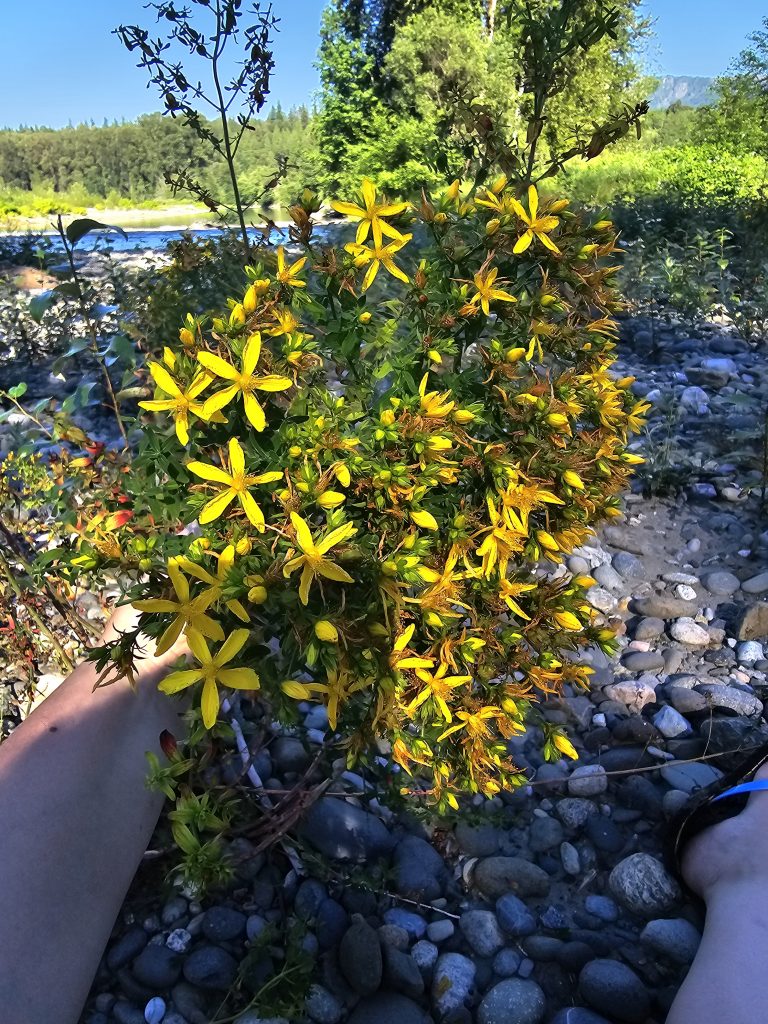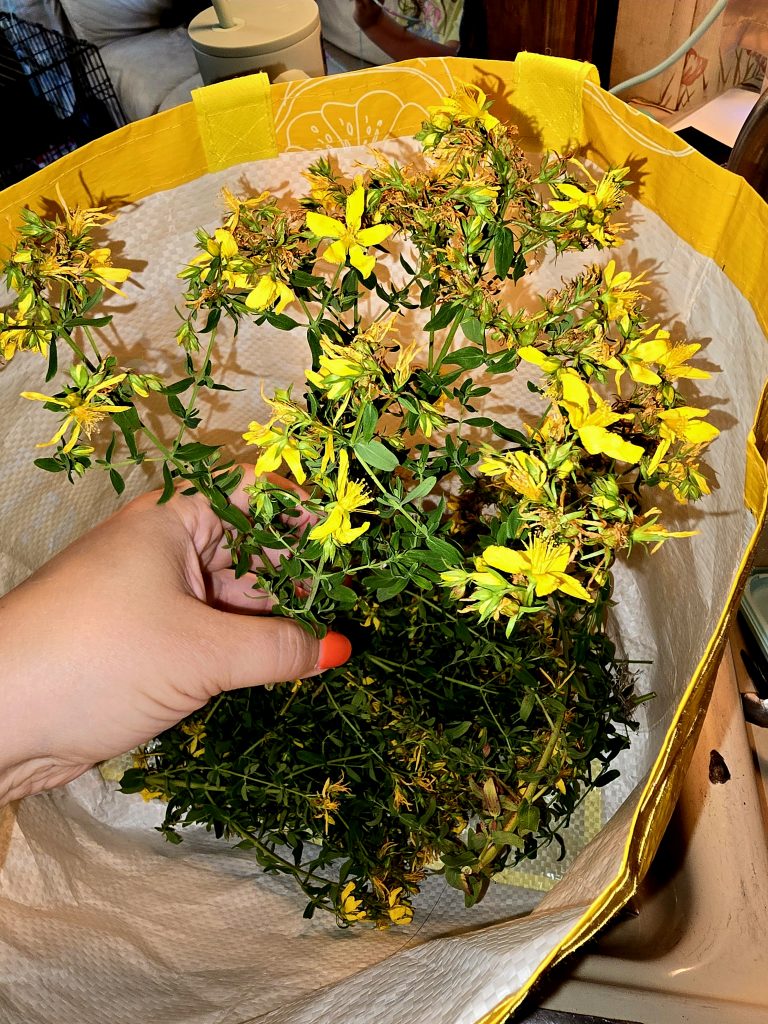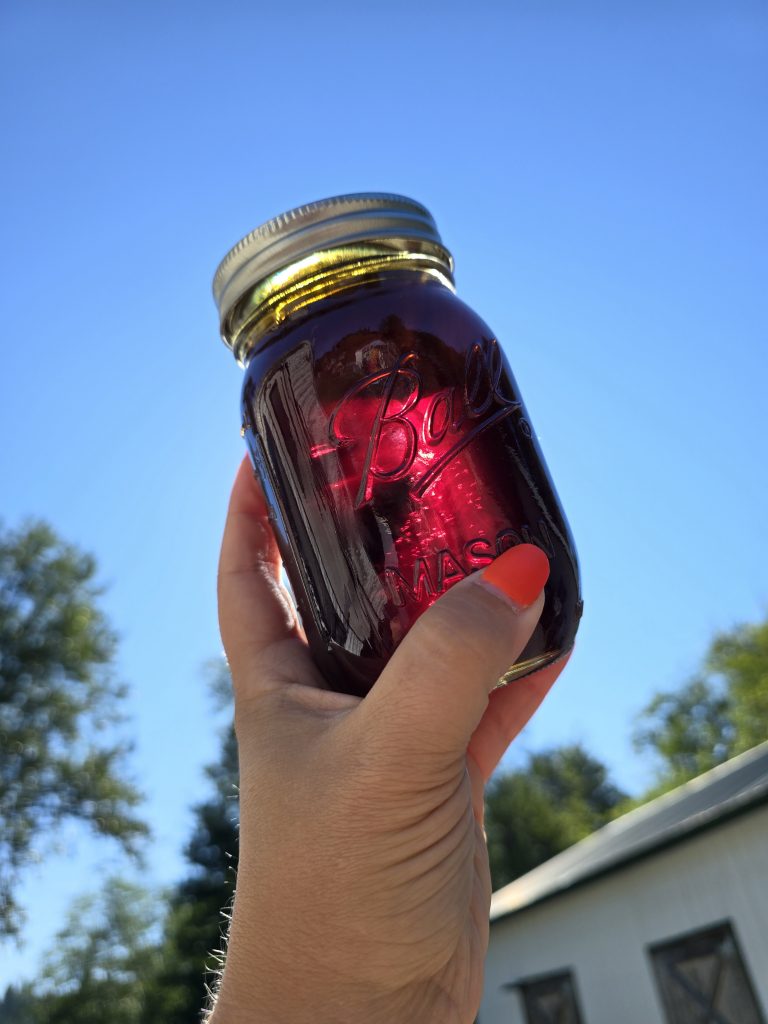Your cart is currently empty!
St. John’s Wort gets its name from St. John, the Baptist, because it often blooms right around June 24th every year, which is the Feast Day of St. John. While it starts blooming around June 24th, and this is the best week to harvest it, you can harvest all the way until the end of July.

St. John’s Wort Historical Uses
This incredible, versatile herb has been used for many ailments dating all the way back to Ancient Greece. St. John’s Wort was used for many different things, but it is notable that it was used for nervous disorders. The most known thing that it has been used for is depression, anxiety, and other mood-related disorders.
St. John’s Wort is antibacterial, antioxidant, antiviral, and anti-inflammatory. It can be used to aid in burns, scrapes, bruises, viral illnesses, and more. Making a salve is a fantastic way to get the external benefits, and making a tincture is a great way to get the internal benefits. However, there are many drug interactions that should be understood before using it internally.
Internal use is most connected to aiding the symptoms of depression and seasonal affective disorder, and it can work wonders for milder cases of either. If you are on any drugs, speak with your doctor before using any internal form of St. John’s Wort. External use is okay.
Drug Interactions
Here is a short list of the types of drugs that can have interactions:
- Immunosuppressives
- Thyroid Medications
- Anticonvulsants
- Antipsychotics
- Cardiac Glycosides/Cardenolides
- Contraceptives (oral, patch, ring, or implant)
- Any anti-depressants
- Any anti-anxiety medications
All of the interactions with drugs are when using it internally. You can use it externally in a salve or an oil without interactions with any of the medications you might be taking. Which brings me to my next point…
How to best use St. John’s Wort
In a salve, for one. This is the best, easiest, safest, and most versatile way to use this herb. There are many ways to make a salve, but the first step is creating an infused oil.
To create an infused oil, you will need to use fresh herbs. This herb is best used fresh, which goes against almost all the ‘herbal rules’ for making herbal infusions. It’s okay, I promise. 😂 After harvesting the herb, let it sit out on the counter for 24 hours. Just enough to wilt but not dry. Don’t leave it out in the sun because it will dry too fast, and you’ll end up with a dried herb. Remember, we want fresh.

For newbies, I will keep this simple. In my membership, which I will launch in August, I will go more in-depth into the different methods of creating herbal infusions.
Traditional Infusion Method
The traditional infusion method is the most commonly used, easiest, least time-consuming, and better for medicinal benefits.
- Take your dried herb and fill a quart mason jar 3/4 full.
- Pour your favorite oil in the jar to the top of the fat part of the jar. (I use avocado oil most often, followed by olive oil and hemp seed oil).
- Put the lid on and make sure it’s tight.
- Give the jar a gentle shake, set it in a sunny window seal, and leave it for 6 weeks.
- Shake the jar once a day or every other day.
- After six weeks, put cheesecloth over a strainer and pour the oil through it.
- You now have St. John’s Wort-infused oil. It should be a shade of red.
Quick Infusion Method
Sometimes, we need the oil quickly. That is okay, as there is a faster way to get an infused oil.
- Fill your jar 3/4 with fresh herbs.
- Top with your favorite oil.
- Get out your crockpot and put about 4 inches of water in the bottom.
- Put a washcloth on the bottom of the crockpot in the water so you can make sure the jar does not get any direct heat.
- Put your jar on top of the washcloth in the crockpot and turn it on warm. High is too high, and low is too high. 🤣
- Do not cover the jar because you want the moisture from the fresh herbs to evaporate. Let it infuse for at least 3 hours, but I usually leave mine for 6 or overnight. The photos below are of a lavender infusion because I did not take photos of my quick infusion of St. John’s Wort, but it shows you how it looks.
- After you have finished the infusion, strain it through cheesecloth, and now you have infused oil!
After you have made the St. John’s Wort infused oil, you can use it to make all kinds of salves.
And this is the final product:



Leave a Reply